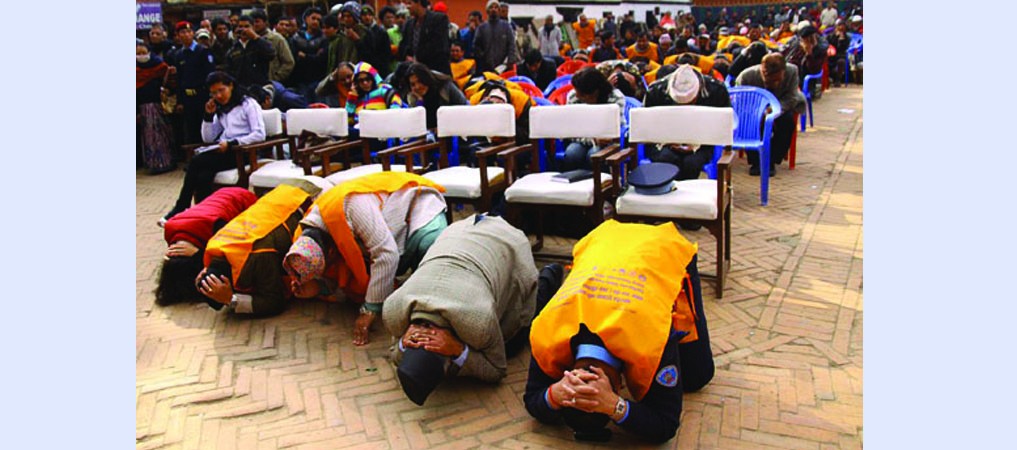Earthquake as powerful as of 1934 can kill 40,000 Kathmanduites: Experts

By A Staff Reporter
Kathmandu, Jan.16: Each year, 16th of January is commemorated as Earthquake Safety Day across the country to lay emphasis on disaster preparedness readiness.
The nation is marking the 22nd National Earthquake Safety Day on Thursday with the slogan “Safe Infrastructure: The Basis for Sustainable Happiness and Prosperity”.
The day is marked commemorating the massive earthquake of 1934 in which 8,000 people were killed in Nepal, 4,000 of them in the Kathmandu Valley alone.
It has been 86 years since the largest earthquake ever recorded on modern equipment hit Nepal. It was measured 8.3 in the Richter Scale.
Thereafter, Nepal was hit by two other earthquakes, in 1988 in eastern Nepal and in 2015 in central Nepal. In these three major earthquakes, over 18,000 people lost their lives.
In the 7.6 magnitude quake of 2015 earthquake, nearly 9,000 people were killed and 22,000 others were injured, and more than 850,000 residential buildings, 5,000 schools and 1,000 health facilities were damaged.
After the 2015 earthquake, people have become more aware about the disaster and are abiding by the government regulations while constructing their buildings.
The country should work more to prepare such disaster in the future as Nepal is the 11th most earthquake prone country in the world, experts said. Senior seismologist Lok Vijay Adhikari of the Department of Mines and Geology, National Earthquake Measurement and Investigation Center said that the whole area of Nepal is in seismic risk. After the devastating earthquake of 2015, more than 50,000 aftershocks were felt.
Executive Director of Nepal Society for Earthquake Technology-Nepal (Nset) and engineer Surya Narayan Shrestha said that awareness among the people had increased in the last five years and the people were serious about the construction process.
Shrestha said that there should be strict rules and regulations, otherwise the people would gradually forget the disaster in years to come. Over 50 municipalities have started to follow the building code of conduct, he added.
Executive Committee Member of Nepal Reconstruction Authority Chandra Bahadur Shrestha said that the government had started implementing the Building Code of Conduct from the central level to every local level.
According to Shrestha, in the 32 districts hit hard by the 2015 earthquake, 900,000 houses were reconstructed applying the earthquake-resilient construction technology. He said that over 100,000 mansions were trained on constructing earthquake resilient houses.
According to the National Society for Earthquake Technology-Nepal, if an earthquake as powerful as that of 1934 is to again hit the Kathmandu Valley then it would result in deaths of 40,000 persons and over 100,000 people may be rendered homeless.
Recent News

Do not make expressions casting dout on election: EC
14 Apr, 2022
CM Bhatta says may New Year 2079 BS inspire positive thinking
14 Apr, 2022
Three new cases, 44 recoveries in 24 hours
14 Apr, 2022
689 climbers of 84 teams so far acquire permits for climbing various peaks this spring season
14 Apr, 2022
How the rising cost of living crisis is impacting Nepal
14 Apr, 2022
US military confirms an interstellar meteor collided with Earth
14 Apr, 2022
Valneva Covid vaccine approved for use in UK
14 Apr, 2022
Chair Prachanda highlights need of unity among Maoist, Communist forces
14 Apr, 2022
Ranbir Kapoor and Alia Bhatt: Bollywood toasts star couple on wedding
14 Apr, 2022
President Bhandari confers decorations (Photo Feature)
14 Apr, 2022











